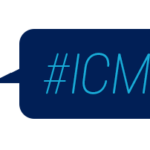
post
August 29, 2014
Self(ish)-service: How Misused IVR Ruins the Customer Experience
People hate IVR, everything from its automated voice to its endless wait times to its frantic button mashing. In fact, only 13% of consumers think IVR is easy to use. Callers can never be sure if they’ll encounter an effective self-service tool, an ineffective self-service tool, or a call routing system. However, most experiences end the same way: with one frustrated customer.
IVRs were originally created to decrease the amount of time an agent had to be on the phone and increase conversions. Unfortunately, they didn’t do as good a job reducing the amount of time for the customer. As companies reaped the financial benefits and agents had more time to work with, customers grew increasingly dissatisfied with the IVR system. Today, only 15% of consumers think IVR use benefits them.
Being overly reliant on IVR often comes at the expense of customer experience. Customers call in to resolve a seemingly simple problem like paying a bill and are taken hostage by never-ending wait times and prompts. (Interactions with live service agents aren’t necessarily better—just check out this Comcast horror story that’s been circulating the web). We’ve all had bad experiences with IVR self-service, but the truth is, we don’t have to.
IVR can actually be a great (and cost-effective) contact center solution if we let it. According to a report by Forrester and Oracle, the average IVR call costs around 15 cents, compared to $15 for a live agent call. The key to using IVR is to make it as easy for the customer as possible to get their problem solved. The pain comes when the self-service fails, or when a customer knows they’re just being asked question to be routed to the appropriate agent. IVRs can offer a great experience. Here are some ways to improve them:
- Add a personal touch. Customers often have to sit through entire phone menus just to find the option they’re looking for, and they’re tired of it–over 40% consumers would prefer to have a text conversation immediately vs. waiting on hold. Drawing on data from past interactions can get customers to the option they want a lot quicker and out of phone menu hell.
- Keep it simple. IVR is a pretty basic system: it routes you where you want to go with the push of a button. It’s also very good at answering basic questions like what a store’s hours or address are. Don’t assign the system overcomplicated functions and your customers won’t be disappointed.
- Make it useful. Customers know what they want from an IVR experience, and that’s to get their problem resolved as quickly and easily as possible. Cater to the customer and their needs: for example, instead of making customers start a call over due to an incorrect entry and wasting their time, let them try again.
- Let them change channels. Over 64% of customers prefer texting a contact center over calling them. Give customers the flexibility to switch between phone and text when it suits them without losing track of where they were in the conversation.
IVRs may seem cheaper than adding another agent to your team, but don’t forget that improved customer service correlates to increased profits.
If you’re interested in learning more about custom voice and IVR applications, professionally designed or do-it-yourself – check out OneReach.
Photo by Flickr user Flavia.
Stay up to date
Latest Articles

OneReach.ai Named a Leader in the IDC MarketScape for Conversational AI Software 2023
December 18, 2023



